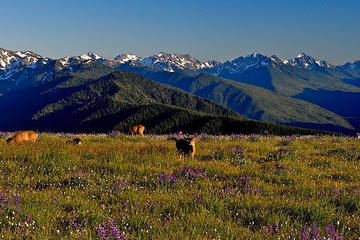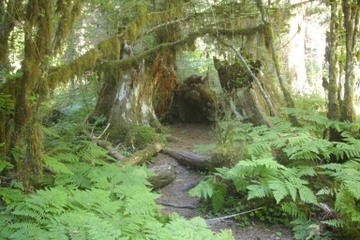Olympic National Park
The nearly one million acres of Olympic National Park protect incredible diversity, mountain peaks, sandy beaches, rain forests, backpacking trails and healthy runs of steelhead and salmon. This outdoor playground is located only a few hours west of Seattle.
Open / Close / Reopening Status of Olympic National Park due to Coronavirus (COVID-19)
Last Updated: May 2, 2020
Busiest Months
Ruby Beach
Ruby Beach is the northernmost beach along Highway 101 in Olympic National Park. It is named for the ruby-like crystals which can turn the beach sand reddish. Abbey Island just offshore is one of the most photographed rock formations in the park. The beach is considered one of the best summer sunset spots in the Pacific Northwest.
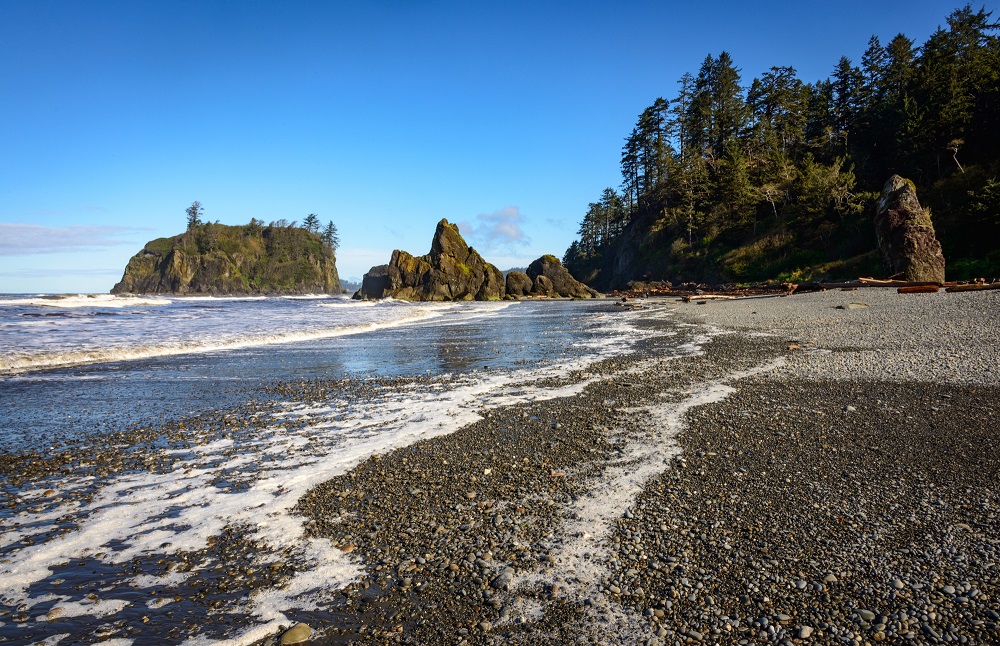
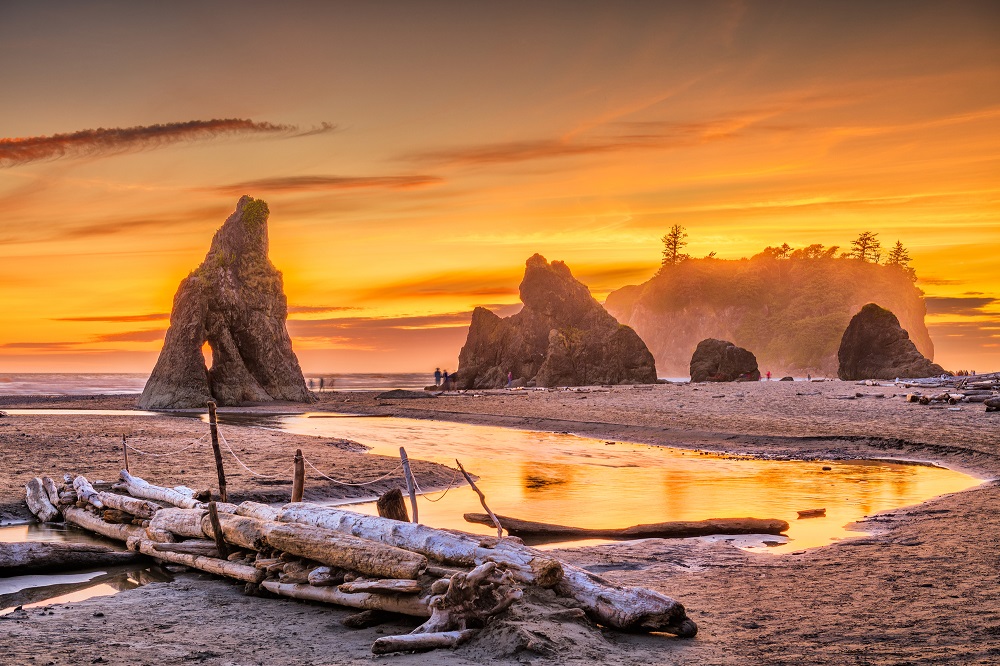
Lake Crescent
Lake Crescent is located 17 miles west of Port Angeles near the community of Piedmont. It is the second deepest lake in the state of Washington. The lake is known for its clarity and brilliant blue color due to a lack of nitrogen which inhibits algae growth.
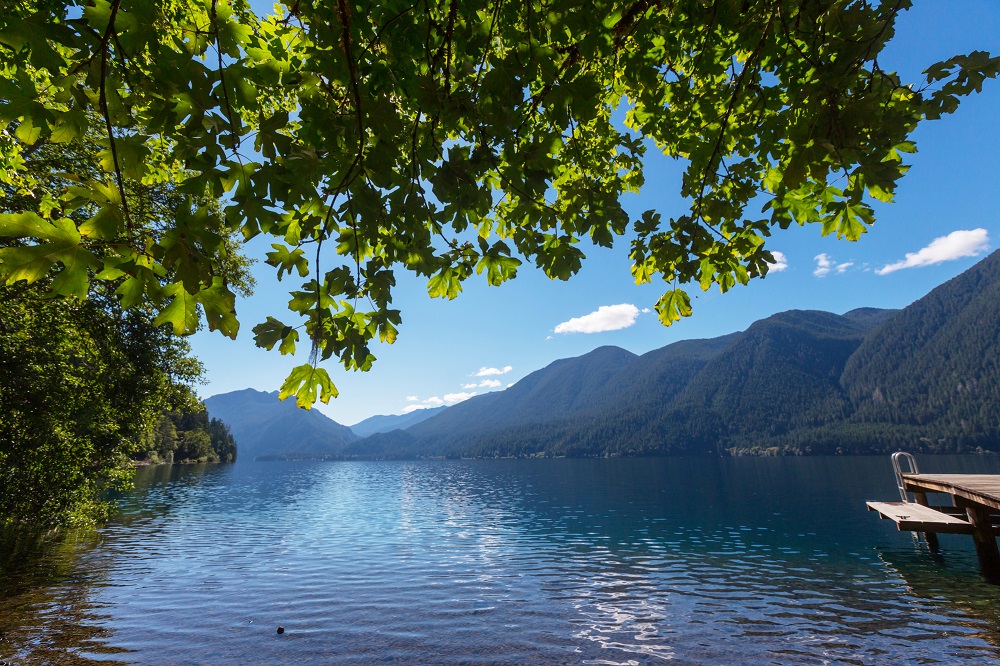
Hurricane Ridge
Located 17 miles south of Port Angeles, it is the most easily accessed mountain area within the park, offering scenic views in clear weather. The road is open throughout the summer and scheduled to be open Friday through Sunday (plus holiday Mondays) in the winter (weather and road conditions permitting, tire chains required, closed other days).
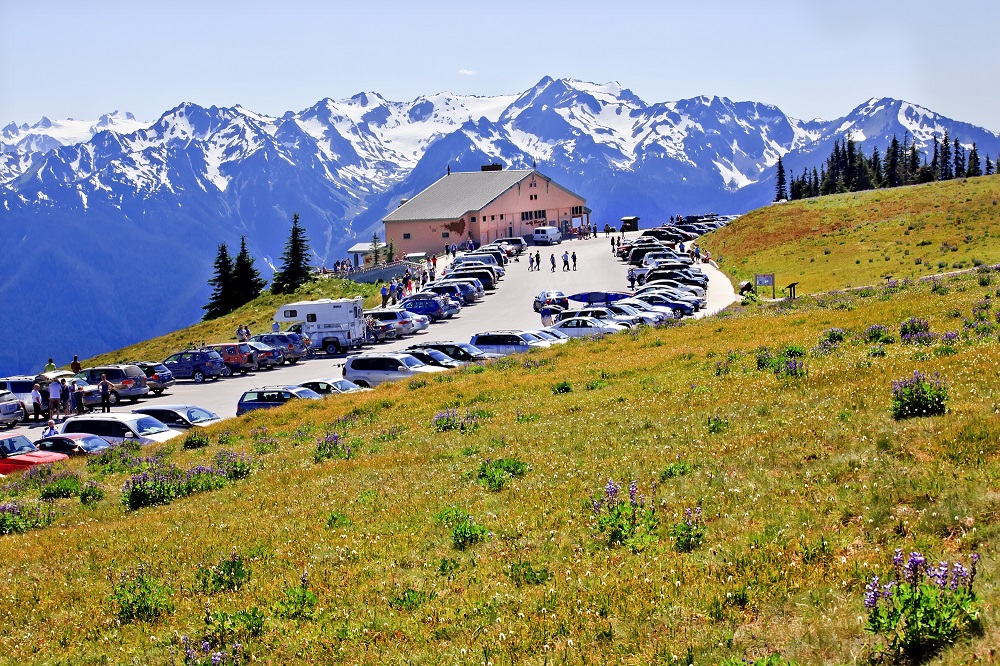
Hoh Rain Forest
This is one of the largest temperate rain forests in the United States, receiving an average of 140 inches of precipitation a year. Located on the west side of the park about two hours from Port Angeles, it is a popular destination reached by the Upper Hoh Road off of Highway 101. There are two short nature trails near the visitor Center, as well as the start of the 17.3 mile Hoh River trail to Glacier Meadows.
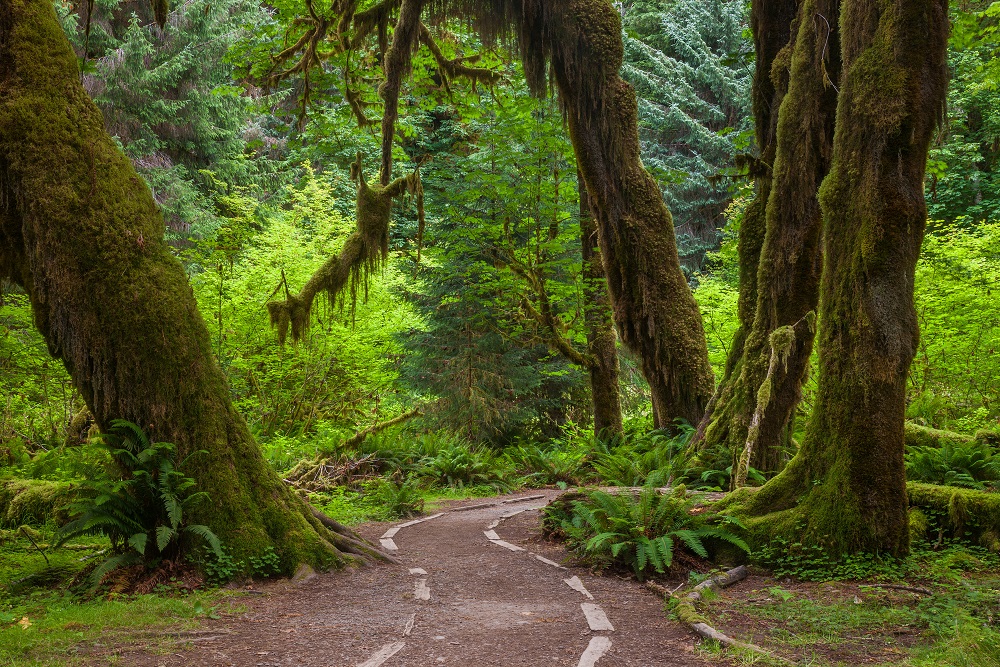
Mt. Olympus
Mount Olympus is the central feature of Olympic National Park, rising to a height of 7,980 feet in western Washington state. Due to heavy winter snowfalls, it supports several large glaciers.
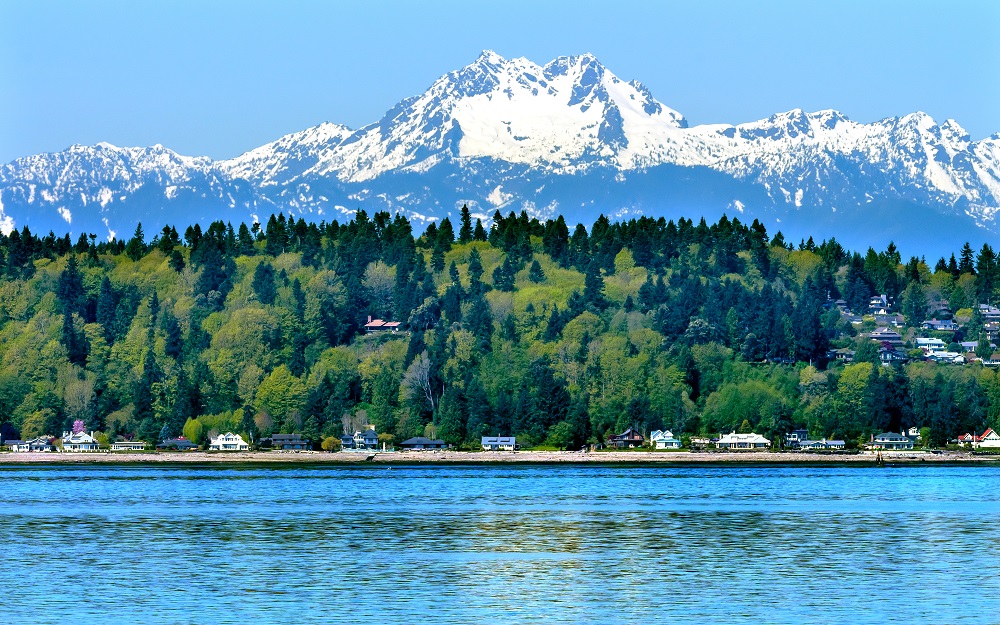
Hiking Trails:
Recent Bird Sightings
Vacation Packages:
Weather Forecast:
[wunderground location=”Elwha, WA” numdays=”4″ layout=”simple” showdata=”search,alert,daynames,highlow,pop,icon,text,conditions,date”]
Average Temperature (Monthly)
Radar:
Campgrounds:
Some Hotels and Other Lodging Options:
Roundtrip Flights to Seattle:
[tp_in_our_city_fly_shortcodes destination=SEA title=”” limit=15 paginate=false stops=1 one_way=false off_title=true subid=”” currency=”USD”]
Shop:
Frequently Asked Questions
Can you drive through Olympic National Park?
You can drive into the park but you can not drive north to south or east to west through the heart of the park. The most popular drive is the Olympic Peninsula Loop, a 329 mile loop around the park best experienced in several days.
Where is the entrance to Olympic National Park?
Ther are entrances near Lake Quinault, Ruby Beach / Kalaloch, the Hoh Rain Forest, Forks, Lake Crescent, and Port Angeles. The park headquarters and main visitor center are in Port Angeles.
How many days do you need to visit Olympic National Park?
Visitors can experience a section of the park in a day but a minimum of three days and two nights will provide more ability to explore the different sections of the park.
How far is it from Seattle to Olympic National Park?
There are two ferry services which will take cars across the Puget Sound from Seattle. To drive, visitors need to travel south to Tacoma or Olympia (depending on destination) before turning north to reach the park. It can take three hours or more to reach ONP from Seattle.
American Samoa
Arches
Badlands
Big Bend
Biscayne
Black Canyon
Bryce Canyon
Canyonlands
Capitol Reef
Carlsbad Caverns
Channel Islands
Congaree
Crater Lake
Cuyahoga Valley
Death Valley
Denali
Dry Tortugas
Everglades
Gates of the Arctic
Glacier Bay
Glacier
Grand Canyon
Grand Teton
Great Basin
Great Sand Dunes
Great Smoky Mountains
Guadalupe Mountains
Haleakala
Hot Springs
Hawaii Volcanoes
Hot Springs
Isle Royale
Joshua Tree
Katmai
Kenai Fjords
Kings Canyon
Kobuk Valley
Lake Clark
Lassen Volcanic
Mammoth Cave
Mesa Verde
Mount Rainier
North Cascades
Olympic
Petrified Forest
Pinnacles
Redwood
Rocky Mountain
Saguaro
Sequoia
Shenandoah
Theodore Roosevelt
Virgin Islands
Voyaguers
Wind Cave
Wrangell-St. Elias
Yellowstone
Yosemite
Zion


